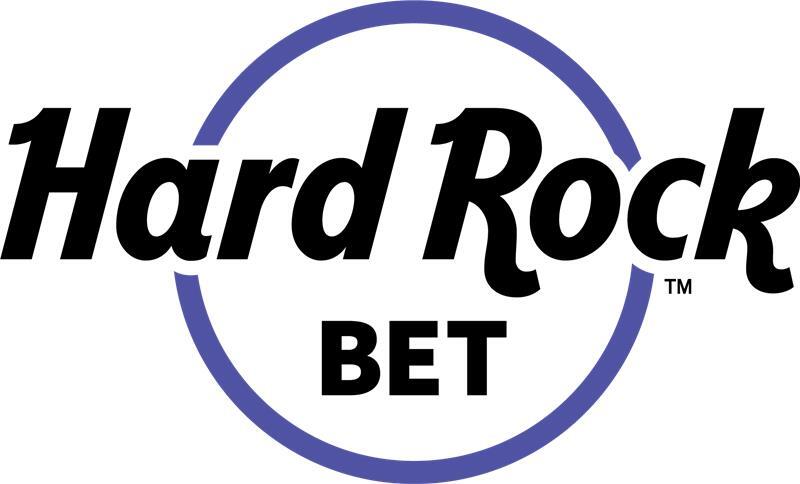Labouchere Blackjack System
The Labouchere system, or “Cancellation” system, is a structured blackjack betting method where players…
Category Ratings
This page contains references to products from one of our advertisers. We may receive compensation when you click on links to those products. Terms apply to the offers listed on this page. For an explanation of our Affiliate Policy, visit this page.
Each bet equals the sum of the first and last numbers in the sequence. Winning bets remove those numbers; losing bets add the lost amount to the end. The goal is to cancel all numbers in the sequence.
Unlike Martingale, which doubles after losses, Labouchere advances more gradually. It avoids geometric jumps in stake size, reducing the risk of quickly reaching table limits.
This slower, more calculated approach to bankroll management may appeal to players who prefer a structured betting method.
In 2025, many still use it to plan blackjack sessions and avoid impulsive betting. It suits blackjack tables offering 3:2 payouts on six-deck shoes that stand on soft 17, where rules are favorable enough to support longer cycles.
At a glance: medium to high risk; best for 3:2 six-deck games that stand on soft 17; bankroll ≈ 60+ units.
Core Principles of the Labouchere System
Start by writing down a profit goal as a sequence of small numbers, such as 1, 2, 3, 4. Your first bet is the sum of the outermost numbers—here, 1 + 4 = 5.
Cross off both numbers if you win, and move to the next outer pair. If you lose, add the lost amount (5) to the end of the line, which now reads 1 2 3 4 5.
Repeat this process. The sequence ends once all numbers are crossed out, and your total profit equals the sum of the original line.
The system can spiral if you hit a long losing streak. The line gets longer, bets grow, and pressure on your bankroll increases. Some players opt to reset partially or fully to limit risk in such cases.
It’s a structured system, but not immune to variance or cold decks.
Historical & Mathematical Background
The Labouchere system was developed by Henry Labouchere, a 19th-century British writer and gambler known for his structured approach to roulette.
His “cancellation” method involves setting a profit target, dividing it into small numbers, and progressively betting the sum of the outer numbers in a line.
Wins cancel two numbers; losses extend the line. The system ends once all numbers are removed, ideally delivering the desired profit.
Though methodical, Labouchere doesn’t reduce the casino’s advantage. Its structure may control pacing, but the probability remains unchanged.
Over time, long losing streaks increase total exposure, raising bet size and risking your bankroll faster.
Modern game theory expresses this reality clearly:
Expected Loss = House Edge × Total Staked
No staking system, including Labouchere, can alter this formula. It offers short-term structure but cannot turn the odds in the player’s favor over extended play.
Table Requirements and Optimal US Setup
The Labouchere system works best under stable, player-favorable blackjack conditions. Look for tables—live or RNG—that pay 3:2 on naturals, where the dealer stands on soft 17, and doubling after splits is permitted.
These rules reduce the house edge and allow more room for structured betting.
Wide bet limits are essential to accommodate longer sequences. A ladder starting at $5 with an upper cap of $1,000 or more helps prevent the system from hitting table max after a few losses.
Six-deck games (especially those from Evolution or Playtech) offer consistent rules and pacing, making Labouchere easier to apply.
Step-by-Step Walk-Through With Annotated Bet Tracker
Here’s a six-hand example using the Labouchere system with a $2 unit and starting line 1 2 3 4:
| Hand | Stake ($) | Result (Win/Loss) | Updated Line | Cumulative Profit/Loss ($) |
|---|---|---|---|---|
| 1 | 2 + 8 = 10 | Win | 2 3 | +10 |
| 2 | 2 + 3 = 5 | Loss | 2 3 5 | +5 |
| 3 | 2 + 5 = 7 | Win | 3 | +12 |
| 4 | 3 + 3 = 6 | Win | (empty) | +18 |
| 5 | 1 + 4 = 5 | Loss | 1 2 3 4 5 | +13 |
| 6 | 1 + 5 = 6 | Win | 2 3 4 | +19 |
Explanation:
- The stake is always the sum of the first and last numbers in the current line.
- After a win, you remove those two numbers.
- After a loss, you add the lost stake amount to the end of the line.
- The cumulative profit/loss updates after each hand.
How to Identify and Sign Up at a Reputable US-Licensed Casino with a Bonus
1. Identify a Reputable US-Licensed Casino
Check the casino’s website footer or “About Us” section for a valid license from regulators like the New Jersey Division of Gaming Enforcement. Verify the license number on the regulator’s official site.
2. Register and Complete KYC
Create an account by providing your name, birthdate, email, and address. Then complete Know Your Customer (KYC) verification by uploading a clear photo ID (driver’s license or passport) and a recent utility bill or bank statement to confirm your residence.
3. Opt In to a No-Wagering Blackjack Bonus
Go to the promotion page after verification and select a no-wager bonus is applicable. If it includes blackjack, you may be able to withdraw wins without playthrough requirements.
4. Deposit Using a Qualifying Method
Use accepted US payment options like debit cards, PayPal, prepaid cards, or certain e-wallets. Confirm that your method qualifies for the bonus.
5. Activate the Bonus
Activate the bonus automatically or via promo code; winnings typically become withdrawable immediately without rollover.
This step-by-step process ensures you play safely and legally while maximizing your bonus benefits at US-licensed online casinos.
Bankroll Planning & Stop-Loss Rules
The Labouchere system requires disciplined bankroll planning for practical use. To weather streaks and complete sequences, a minimum starting roll of 60 units is advised.
For example, with a $2 base unit, you’d need at least a $120 bankroll.
Stick to strict rules: set a stop loss at 20% of your total bankroll—$24 in this example—and a stop win at 10%, or $12.
These boundaries help avoid emotional decisions and overexposure during volatile runs.
Never raise your base unit mid-sequence, even if you’re ahead. Doing so distorts the math and increases risk without improving odds.
Variations & Tweaks Used by Seasoned US Players
Experienced US players often modify the Labouchere system to better suit different bankroll sizes and game speeds. Below are a few examples.
- Reverse Labouchere adds numbers after each win and deletes after losses. It’s an aggressive profit-chasing variant that can grow fast during winning streaks but risks major losses if the tide turns. Many players find it best reserved for short mobile sessions with capped risk.
- Half Unit Labouchere halves each line number (e.g., 0.5–1–1.5–2) to reduce stake jumps. It’s ideal for cautious players and $1 mobile tables, allowing steadier pacing and smaller drawdowns, though it also means slower profit accumulation.
- Tiered Reset cuts long lines (over 12 entries) back to the first third after a win. This reduces runaway stake inflation during bad runs. It suits mid-to-high limit players who want structure while avoiding loss spirals in live dealer pits. Each variant adjusts risk, speed, and mental load. Choose based on your bankroll, game format, and tolerance for variance.
How Does Labouchere Compare With Other Systems?
Reviewing how Labouchere compares with other blackjack systems can help you decide which strategy to utilize based on your budget or gameplay style.
Labouchere vs Fibonacci
The Labouchere system uses a custom sequence in which bets are the sum of the first and last numbers. This offers flexibility but risks faster escalation during losing streaks.
The Fibonacci system follows a preset sequence, increasing more gradually, making it easier to track, but still vulnerable to extended losses.
Labouchere vs D’Alembert
The D’Alembert system increases stakes slowly (by 1 unit after a loss), while Labouchere uses summed ends, resulting in faster growth and higher exposure. Labouchere is more flexible, but D’Alembert is simpler and gentler on low-bankrolls.
Labouchere vs Martingale
The Martingale system doubles stakes after each loss, leading to exponential growth and rapid table cap collisions. Labouchere grows more slowly, but still risks long expansions.
Martingale is easier but a riskier choice.
Labouchere vs Oscar’s Grind
Oscar’s Grind only raises stakes after a win and aims for a single unit profit per cycle. It’s safer, more conservative, and places minimal strain on limits.
Labouchere is more aggressive and prone to extended sequences.
Comparison Table
| System | Growth Rate | Risk of Ruin | Complexity | Table Limit Pressure |
| Labouchere | Medium–High | Medium–High | Medium | Medium–High |
| Fibonacci | Medium | Medium | Low | Medium |
| D’Alembert | Low | Low | Low | Low |
| Martingale | Very High | Very High | Low | Very High |
| Oscar’s Grind | Low | Low | Medium | Low |
Ideal US-facing casinos & Live Studios to Practice the System
1. BetMGM Blackjack Lobby (NJ License)
Digital and live games follow 3:2 payouts with H17 rules. Betting limits can range from $1 to $5,000, depending on the table tier. Up to 2% cashback is available for VIPs, but wagering eligibility varies. Read more in our BetMGM review.
2. Evolution Live Blackjack (NJ & PA Studios)
Offers 3:2 payouts, dealer stands on soft 17 (S17), and limits typically range from $5 to $2,000. Cashback typically ranges from 0.5% to 1%. Side bets like 21+3 or Perfect Pairs rarely count toward wagering.
3. Playtech Live Blackjack (Michigan)
Tables use S17 rules with flexible min–max limits from $10 to $5,000. Loyalty programs may include 1% cashback on net losses. Only main game bets count toward bonuses—side bets are excluded.
Visit our Live Casino Hub to get the full overview.
Common Misconceptions & Pitfalls
Many players mistakenly believe that canceling numbers in the Labouchere system guarantees profit, but this is false. Extended losing streaks can rapidly lengthen the number sequence, causing bets to grow beyond manageable limits.
There’s also a psychological risk of increasing the target profit mid-session, which increases stakes and potential losses.
Another issue is ignoring the table’s maximum bet limits. This move can force players to stop the progression prematurely, resulting in significant losses rather than the expected gains.
Tips & Tricks for Getting Started with Labouchere
To start with the Labouchere system, set modest target profit lines using small numbers. Keep detailed records of each hand in a spreadsheet to track progress and spot patterns.
Limit individual bets to no more than 5% of your bankroll to manage risk. Practice the system first on free RNG blackjack tables before wagering real money.
Use deposit limits to control spending and consider cashback promotions, which can help offset variance without guaranteeing profit.
Other Applications of Labouchere
The Labouchere system isn’t just for blackjack. It’s also used in roulette and baccarat, especially on even-money bets.
In roulette, players use Labouchere to bet on red/black or odd/even, adjusting their bets to cover losses and aim for steady wins. Our Labouchere Roulette System page provides more details on how it works.
In baccarat, the system applies to Banker or Player bets, helping manage bets and bankroll through wins and losses.
Responsible Gaming
Responsible gambling tools include deposit caps, session timers, self-assessment tests, cooldowns, and self-exclusion. Deposit caps limit how much money players add to their accounts, reducing overspending.
Session timers remind players to take breaks, while self-assessment tests encourage honest reflection on habits. Cooldowns provide temporary breaks, and self-exclusion offers longer or permanent restrictions.
No betting system, including progression strategies, can overcome the house edge or guarantee profits. For safer play, review the Responsible Gambling page. U.S. players can get help from the National Council on Problem Gambling.
Main Takeaways
The Labouchere system aims to recover losses by crossing off numbers in a betting sequence after each win, effectively “canceling” losses step-by-step. Success with Labouchere requires strict discipline to follow the sequence without deviation.
It performs best in blackjack games offering a wide-betting limit and favorable rules, such as 3:2 payouts on blackjacks, which help maximize its effectiveness.
Players should understand that no progression system guarantees profits and that bankroll management and responsible play remain essential.
Key Takeaways:
- Labouchere recovers losses by reducing a betting sequence after wins
- Requires careful discipline and bankroll management
- Works best on 3:2 blackjack tables with wide-betting limits
- Does not alter the casino’s house edge
- Not a guarantee of profit; use responsibly
FAQs
What is the basic staking rule in the Labouchere system?
Bet the sum of the first and last numbers in your chosen sequence.
How many betting units should I start with for a low-risk session?
Start with a small sequence totaling 5 to 10 betting units.
Does the system work better on S17 or H17 blackjack tables?
It works better on S17 tables due to the lower house edge.
How is Reverse Labouchere different from the standard progression?
Reverse Labouchere increases bets after wins instead of after losses.
What happens if I reach the table’s maximum stake before a win?
You cannot continue the progression properly, risking larger losses.
Can Labouchere be combined with La Partage roulette or blackjack cashback promos?
Yes, but casino terms vary and should be checked.
Is the system suitable for volatility boosted games like Lightning Blackjack?
It’s less suitable due to higher game volatility.
Do US online casinos allow auto bet scripting for Labouchere sequences?
Most US casinos prohibit auto bet scripting for such strategies.
Will using Labouchere violate the bonus max bet or game weighting rules?
Depending on the casino’s bonus terms, it may.
How do I decide when to reset the line or leave the session?
Reset or stop when you hit profit goals or loss limits or feel at risk.
Does long-term Labouchere play alter the house edge?
No, the house edge remains unchanged regardless of the system.
For almost two decades, Sadonna has remained at the forefront of the gambling industry in the US and abroad, covering the latest news and legal updates. Sadonna’s goal is to provide sports bettors and casino players with premium content, including comprehensive details on the US industry.













